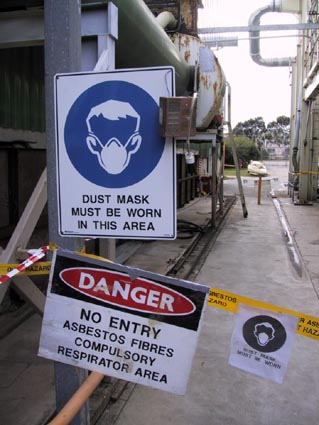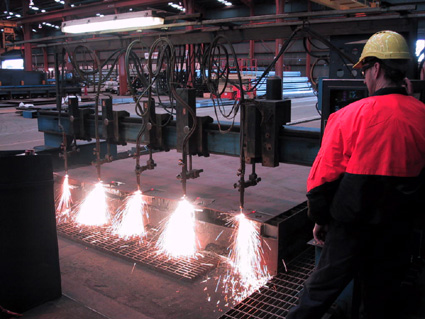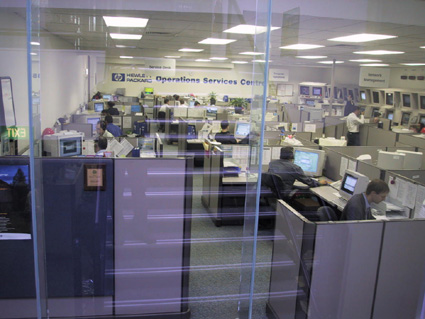 |
|||||
Occupational Hygiene
We provide services to establish compliance with State and Federal regulations and code of practice. Our assessment processes follow recognised methodology such as that in Australian Standards.
Service areas
Exposure assessment of airborne particulates – fibres, dusts, vapours, gases
Asbestos
Legislation / GuidelinesOccupational Health and Safety Regulations Worksafe Compliance Code Managing in workplaces Worksafe Compliance Code Removing asbestos in workplaces Methodology Part 5 Asbestos Audit – conduct audit comprising of the identification of asbestos containing materials at the worksite with a NATA accredited laboratory used for identification, and risk assessment through the consideration of factors such as the type of material, non-friable or friable, its condition, and the potential for damage. Part 6 Asbestos Audit – a destructive audit of buildings/structures for demolition/refurbishment purpose - identifies asbestos containing materials and other hazardous materials (lead, PCBs, synthetic mineral fibre) Fibre Monitoring – conducted during removal operations to assess the release of airborne fibre though collection at the perimeter of the worksite Clearance Monitoring and assessments – inspection and monitoring at the completion of removal operations, indicates that the workplace is safe to re-enter Equipment SKC PCRXR8 Air Sampling Pumps Dry-Cal DC Lite Calibrator 25mm Open face monitors Examples Part 5 & 6 Audits – Skilled Stadium, Deakin University Waurn Ponds, Woolstores, Warrnambool, Toorak, Burwood Fibre Monitoring / Clearances – Graincorp Geelong - removal of Grain Gallery
Legislation / GuidelinesDangerous Goods (Storage and Handling) Regulations Code of Practice Storage and Handling of Dangerous Goods Australian Standard AS1692 Tanks for flammable and combustible liquids Australian Standard AS1894 The Storage and Handling of Non-flammable and cryogenic refrigerated liquids Australian Standard AS1940 The Storage and Handling of Flammable and Combustible Liquids Australian Standard AS2022 SAA Anhydrous Ammonia Code Australian Standard AS3780 The Storage and Handling of Corrosive Substances Australian Standard AS4326 The Storage and Handling of Oxidising Substances Australian Standard AS4332 The Storage and Handling of Gas Cylinders Australian Standard AS4452 The Storage and Handling of Toxic Substances Methodology A site audit is conducted with a walkthrough assessment to identify Dangerous Goods, and a review of records to assess Material Data Sheets and the Manifest. A risk assessment is then conducted (labelling, signposting, storage, spill containment, emergency response) with recommendations provided to ensure compliance with the regulations Examples Audit at Structural steel fabrication plant, automotive component supplier
Exposure AssessmentLegislation / GuidelinesAustralian Standard AS 2985 Workplace Atmospheres – Method for sampling and gravimetric determination of respirable dust Australian Standard AS 2986 Workplace Atmospheres – Organic Vapours - Sampling by Solid Adsorption Techniques Australian Standard AS 3640 Workplace Atmospheres – Method for sampling and gravimetric determination of inhalable dust Australian Standard AS 3853.1 Fume from welding and allied processes Methodology Personal or static monitoring of airborne contaminants Area assessment with contaminant profiles Risk assessment and control Equipment SKC PCXR8 Personal air sampling pumps SKC 25mm open face monitors SKC cyclones SKC adsorbant tubes DryCal DC Lite calibrator TSI Dust Trak (particulate) Rae Systems Minirae 3000 Methodology Assessments are made by recognised test methods with sample analysis, where possible, at National Association of Testing Authorities (NATA) accredited laboratories. Contaminant concentrations are then compared with occupational exposure standards with recommendations for exposure control provided where necessary. Examples Volatile solvent monitoring – print facility VOC and benzene monitoring - offshore oil platforms, upstream production Shot blast dust assessment – structural steel facility Welding assessment - steel fabrication plant
Fume Cupboards / Spray Booths / Ventilation SystemsLegislation / GuidelinesAustralian Standards AS2243.8 Safety in Laboratories part 8 Fume cupboards Australian Standards AS4114 Spray Painting Booths ACGIH Industrial Ventilation, A Manual of Recommended Practice Methodology Test face velocity, air flow, and compare with equipment standards Equipment TSI 8384 Velocicalc Plus Hot wire anemometer Draegar Smoke Tubes
Hazardous SubstancesLegislation / GuidelinesOccupational Health and Safety Regulations List of Designated Hazardous Substances Methodology A site audit is conducted with a walkthrough assessment to identify Hazardous Substances, and a review of records to assess Material Data Sheets and the Manifest. A risk assessment is then conducted (consider information on the MSDS and the label, the nature of the work, and any history of illness or disease associated with the material) and provide recommendations to ensure compliance with the regulations Examples Audit at Structural steel fabrication plant, Automotive component supplier
Heat Stress
Legislation / GuidelinesACGIH Threshold Limit Values for Physical Agents in the Work Environment – Heat Stress and Strain AIOH Heat Stress Standard for use in the Australian Environment ISO 7933 Methodology Assess heat balance – consider environmental factors (air temperature, humidity, wind speed, radiant heat), personal factors (acclimatisation, clothing, activity) Estimate effect on core temperature Equipment Questemp 34 Heat Stress Monitor TSI Hot Wire Anemometer Examples Glass fabrication plant Endurance sporting event
Indoor Air Quality
Legislation / GuidelinesASHRAE Indoor Air Quality Guidelines Methodology Identify issue – symptoms of occupants, time of event, period and frequency of event, location of issue Conduct screening test – assess over a 24 hour period air temperature, humidity, carbon dioxide, carbon monoxide, particulate, assess air flows. Assess specific contaminants i.e. volatiles, bacterial, mold etc Compare assessed parameters with recommended values Provide control recommendations Equipment TSI Q-Trak Plus (data logs Temperature, Carbon dioxide, Carbon monoxide, humidity) TSI 8384 VelociCalc hot wire anemometer TSI Dust Trak (particulate) Zellweger Impact Pro Examples Call Centre Office Building Council Chambers
Material Safety Data Sheets (MSDS's)
Legislation / GuidelinesNational Code of Practice for the Preparation of Material Safety Data Sheets Methodology Set up MSDS proformas, identify and document supplier details, hazard identification, composition, toxicology, exposure limits, first aid measures, fire fighting response, accidental release measures, handling and storage requirements, exposure control/personal protection, chemical properties, disposal information etc. Access chemical and toxicological databases Examples Interpret handling and storage requirements from MSDS for cosmetics group Develop MSDS for ammunitions manufacturer Lead
Legislation / GuidelinesOccupational health and Safety Regulations Code of Practice Lead Methodology Identify lead process and lead risk jobs Conduct risk assessment Equipment SKC Air sampling pumps SKC 25mm open face monitors DCLite Calibrator Examples Risk assessment at electrical components manufacturer
Lighting
Legislation / GuidelinesAustralian Standard AS1680 Interior Lighting Methodology Illuminance levels are assessed to determine compliance with the recommendations within the Australian Standard Equipment Testo 545 Light Meter Examples Fitters work area - Steel fabrication plants Assembly area – electronics manufacturing plant
Noise
Legislation / GuidelinesOccupational Health and Safety Regulations Australian Standard AS 1268 Occupational Noise Management Methodology Assess static (fixed point) sound pressure levels or personal exposures, consider control requirements, assess suitability of hearing protection Equipment B&K 2250 Sound Level Meter Quest Noise Pro DLX Dosimeters Examples Steel fabrication facility Textile manufacturer Concrete pipe manufacturer
Non-ionising radiationLegislation / GuidelinesACGIH Threshold Limit Values – Static & Sub-Radiofrquency Magnetic Fields Methodology Walkthrough survey, static fixed point assessments, personal dosimetry Equipment Hurst GM04 Gaussmeter Examples Magnetic field assessment – HV switchrooms, conveyor separators
Risk Assessments
Methodology Review toxicology, MSDS, exposure limits Assess process, handling and storage Estimate potential exposure, health outcomes Provide recommendations for control
|
|||||
|
6 WINDARRA GROVE JAN JUC VICTORIA AUSTRALIA 3228 Mobile 0404 800 238 E-mail aaron@controlone.com.au | |||||



